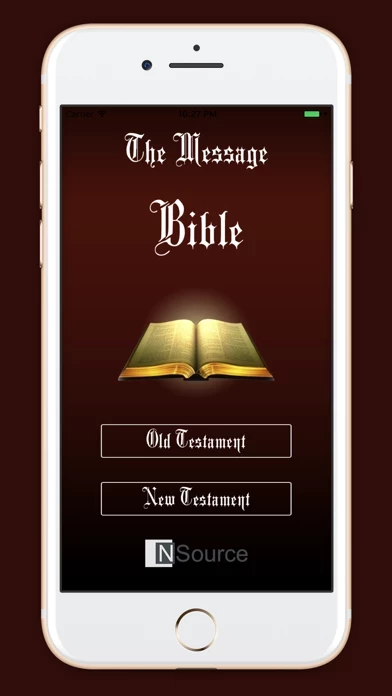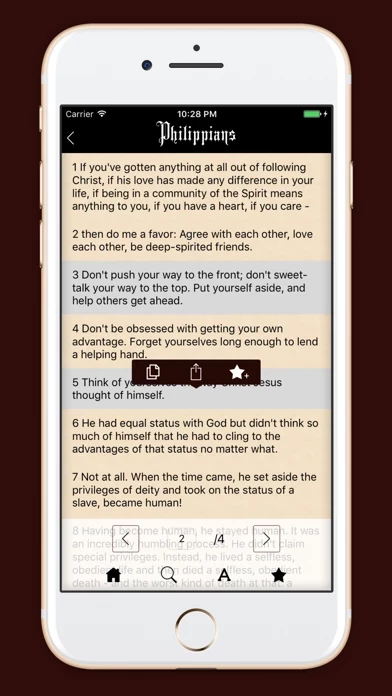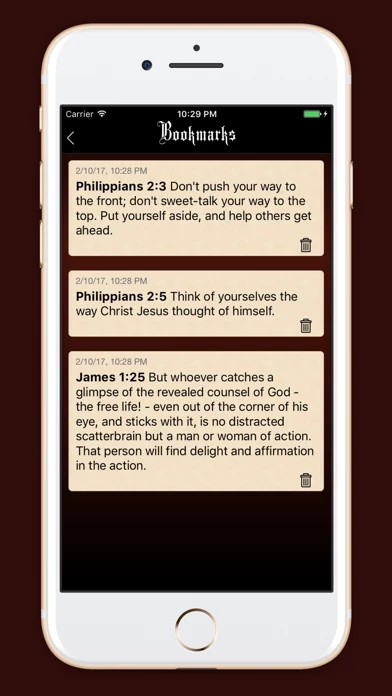The Message is designed to be read by contemporary people in the same way as the original koine Greek and Hebrew manuscripts were savored by people thousands of years ago.
He decided to strive for the spirit of the original manuscripts to express the rhythm of the voices, the flavor of the idiomatic expressions, the subtle connotations of meaning that are often lost in English translations.
The second group were those who had read the Bible all their lives but now found it "old hat," so familiar that they were no longer startled by the truth of its message.
The goal of The Message is to engage people in the reading process and help them understand what they read.
This is not a study Bible, but rather "a reading Bible." The verse numbers, which are not in the original documents, have been left out to facilitate easy and enjoyable reading.














